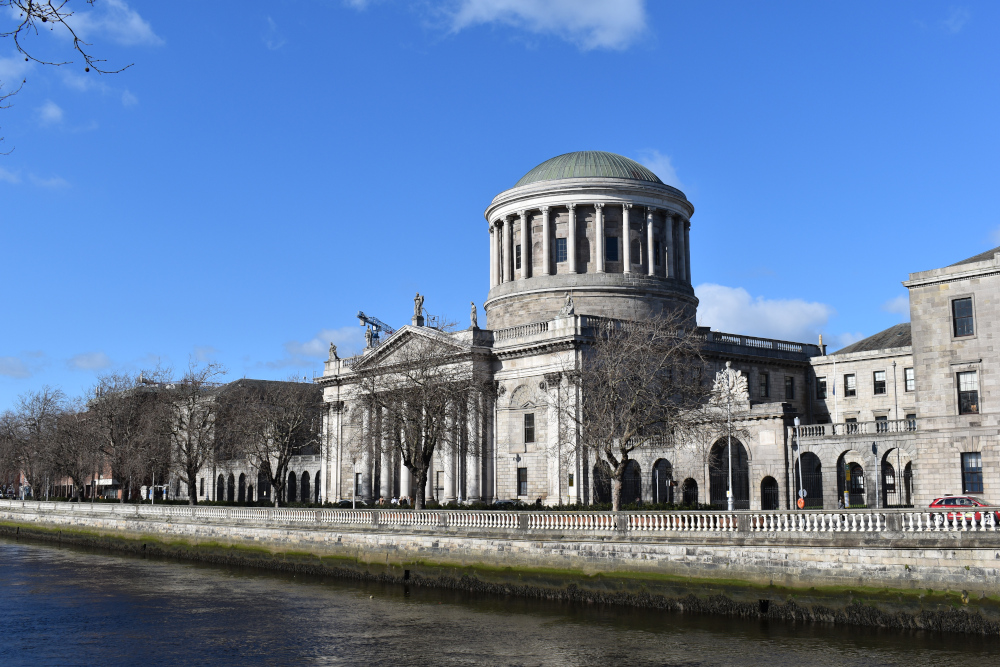Court of Appeal: €140,000 for Dunnes Stores employee who injured ankle in fall from a wobbly ladder

The Court of Appeal has upheld a finding of liability against Dunnes Stores for injuries suffered by an employee who fell from a wobbly ladder while stacking shelves. Dunnes Stores appealed the decision on the basis that the trial judge erred in his assessment of the evidence in the case.

About this case:
- Citation:[2023] IECA 27
- Judgment:
- Court:Court of Appeal
- Judge:Mr Justice Seamus Noonan
Delivering judgment in the matter, Mr Justice Seamus Noonan emphasised that an appellate court would not interfere with findings of fact supported by credible evidence. While the plaintiff was unclear in the mechanism of the fall, but she was consistent in stating that she was on the ladder when it fell. Further, the contradicting evidence of Dunnes’ manager was marked by “serious questions” about its correctness.
However, the court held that the trial judge erred by awarding €120,000 in general damages to the plaintiff for her injury (which including special damages gave a total of €160,000). Accordingly, the court reduced general damages to €100,000, leaving a total of €140,000.
Background
The plaintiff was employed by Dunnes Stores. Her duties included “facing off” the supermarket shelves, which involved bringing items to the front of the shelves from the back. She used a ladder (a classic A frame commonly seen in homes) for the higher shelves.
At a certain point, the plaintiff fell from the ladder and landed on her ankle. She suffered a very significant injury known as a trimalleolar fracture disclosure in her left ankle. She was on the ground for a few minutes before she received help from the store manager (Mr Murphy) and it was several hours before an ambulance arrived.
Although there was a CCTV system in operation, the cameras only captured still images. There were two cameras which caught the incident, but the camera footage was of very poor quality. Based on this footage, the expert witnesses for each side were diametrically opposed in their view as to the mechanism from the accident, with the defendant’s expert maintaining that the plaintiff must have tripped over the ladder.
Further, in defending the claim, Dunnes Stores relied on Mr Murphy’s account. He claimed that he had spoken with the plaintiff in the aftermath of the incident when she confirmed twice to him that she had not fallen off the ladder. He provided a written statement regarding his account of the incident, but this was apparently “lost” by Dunnes Stores before the trial.
Dunnes Stores also relied on an accident report form which was allegedly completely by the security manager of the store, but was signed by the store manager. While the form was dated 26 September 2018, it was signed by the store manager in August 2019. The statement stated that, on review of the CCTV footage, it appeared that the plaintiff actually tripped on the ladder while walking past it instead of falling from it.
The plaintiff also provided a statement following the accident, where she outlined that she had fallen from the ladder while climbing down from it. However, at trial, the plaintiff was entirely unclear as to whether she was climbing up or going down the ladder.
In an ex tempore judgment, the trial judge held that the plaintiff was a credible and honest witness. It was held that her comment to Mr Murphy that she had not fallen from the ladder was given while she was in extreme pain and so this could not be held against her.
The court was also critical of Mr Murphy’s evidence and that his statement had been lost by Dunnes. On the expert evidence, it was held that the CCTV footage was very unclear but it was more probable that the plaintiff’s version was correct.
On the instability of the ladder, the court held that there was a significant wobble which likely caused the plaintiff to fall. Accordingly, the court found Dunnes Stores to be liable for the accident and awarded a total of €160,000 in damages.
Court of Appeal
In the appeal, Mr Justice Noonan began by emphasising that an appellate court would not interfere with findings of fact which were supported by credible evidence. While a judge stating that a witness was credible did not “immunise the finding from appellate scrutiny”, in this case the plaintiff was consistent that she was on the ladder when the accident happened. As such, the court held that the inconsistent account of whether she was going up or down was not sufficient to overturn the decision.
It was also accepted that she was in severe pain when speaking to Mr Murphy and had no opportunity or motive to concoct a false version of events. Her narrative was also consistent with her statement in hospital and the medical evidence supported her claim.
There were also serious questions raised by Mr Murphy’s evidence, the lost statement by Dunnes and the unidentified person who filled out the accident report form without reference to either the plaintiff’s or Mr Murphy’s statement. It was notable that this unidentified person interpreted the CCTV footage “with a certainty that baffled the trial judge”. As such, the trial judge was clearly entitled to prefer the evidence of the plaintiff.
Turning to the expert evidence, it was noted that Dunnes alleged that the trial judge had not properly engaged with the evidence. First, the court outlined that “in many cases elaborate analysis is not required where the reasons for the result is perfectly obvious or is reasonably to be inferred”.
It was held that “non-engagement” arguments should not be used to circumvent the principle that appellate courts should generally not interfere with findings of fact from the High Court (see McCormack v Timlin & Ors. [2021] IECA 96). The threshold for succeeding a claim that a judge trial failed to engage with evidence was high (see Leopardstown Club Ltd. v Templeville Developments Ltd. [2017] IESC 50).
While a court may often derive considerable assistance from expert evidence in a case, expert engineers often gave evidence that was not strictly a matter of special expertise, such as maps and photographs of a locus. The evidence on the CCTV footage fell into this category, the court said. As such, the trial judge was in as good a position as anyone else to determine what was contained therein.
In preferring the view of the plaintiff’s expert, the judge was not expressing acceptance of a scientific opinion. He did not need to go further than stating that his viewing of the footage accorded with the plaintiff’s expert, the court said. The same conclusions applied in respect of whether there was a wobble in the ladder.
In truth, the claim that the trial judge failed to engage with the evidence was “in substance a complaint that its evidence was more persuasive”, which was not the test.
However, on quantum, the court noted that the plaintiff had very significant limitation in her ankle and had developed osteoarthritis. She would likely require ankle fusion in future.
The Book of Quantum outlined that “severe and permanent” injuries to an ankle provided for a maximum of €93,300. The trial judge had awarded €120,000 for this damage, which was disproportionate without further explanation by the trial judge.
Having regard to the injuries and the future outlook for the plaintiff, the court provided an uplift from the Book of Quantum category, but reduced the general damages to €100,000.
Conclusion
The court allowed the appeal to a limited extent and awarded a total of €140,000 to the plaintiff. The defendant failed to overturn the finding of liability from the High Court.
Gunta Kadege v. Dunnes Stores [2023] IECA 27










